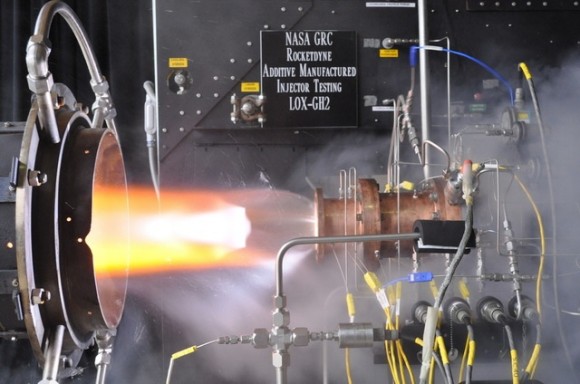Via Slash Gear
-----
In the latest of 3D-printed hardware, NASA
has completed a series of test firings of the agency’s first rocket
engine part made entirely from 3D printing. The component in question is
the rocket engine’s injector, and it went through several hot-fire
tests using a mix of liquid-oxygen and gaseous hydrogen.

However, NASA didn’t use ABS plastic that most 3D-printers use.
Instead, the agency used custom 3D printers to spray layers of metallic
powder using lasers. The lasers spray the powder in a specific pattern
in order to come up with the desired shape for an object. In this case: a
rocket engine injector.
The testing was done at NASA’s Glenn Research Center in Cleveland and
the project is in partnership with Aerojet Rocketdyne. The company
designed the injector and used 3D printing to make the component a
reality. If they were to make the injector using traditional
manufacturing processes, it would take over a year to make.
With 3D printing now an option, NASA and Aerojet Rocketdyne are able
to make the same component in just a matter of four months or less.
Costs are a huge factor too, and the 3D-printed reduces costsby up to
70% compared to traditional methods and materials. This could lead to
more efficient and cost-effective manufacturing of rocket engines.
NASA didn’t say what was next for the 3D-printed injector as far as
testing goes, nor do they have a timeline for when they expect to
officially implement the new technology in future rocket engines. We can
only expect them to implement it sooner rather than later, but it could
take several more years until it can be fully operational and on its
way into space.

